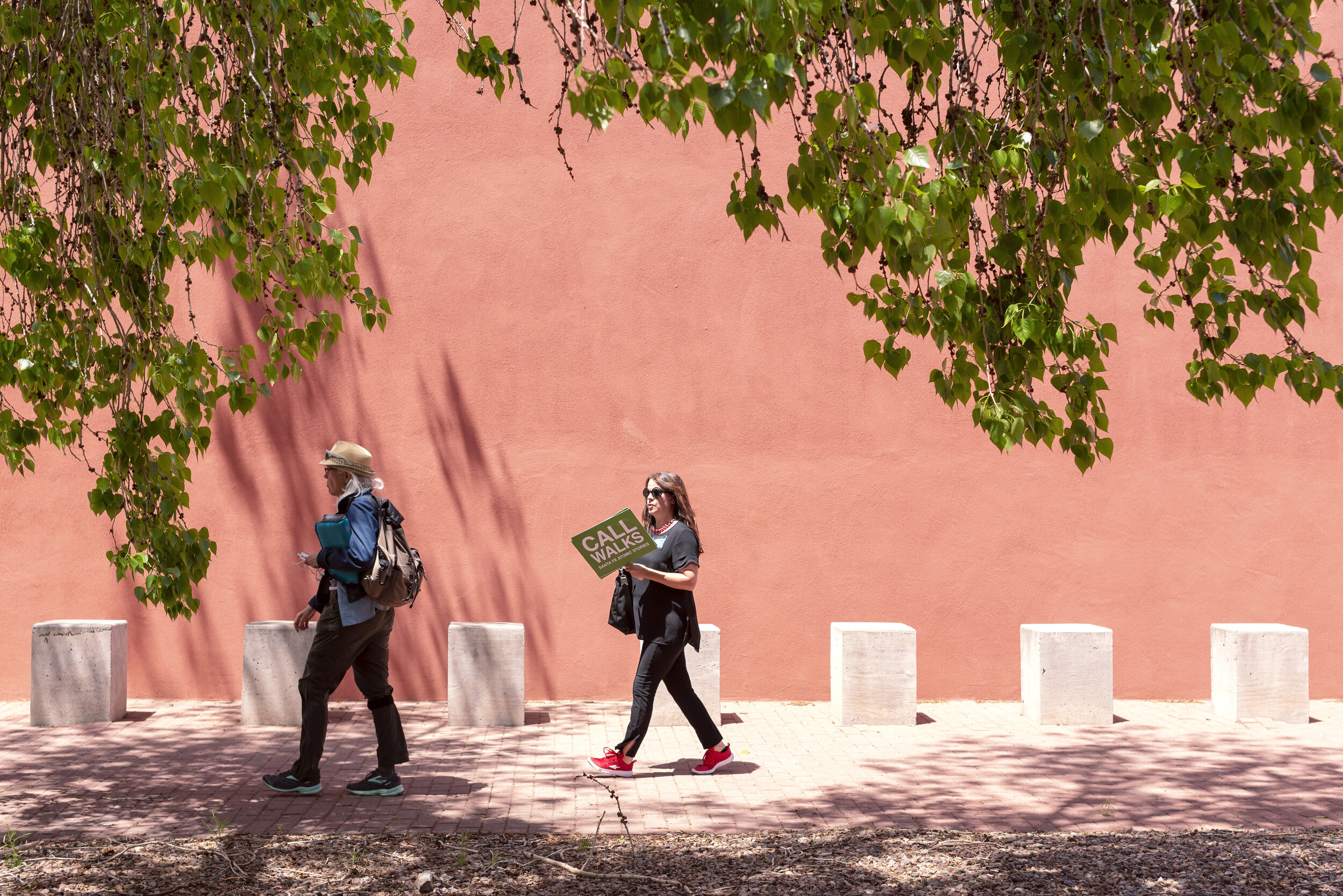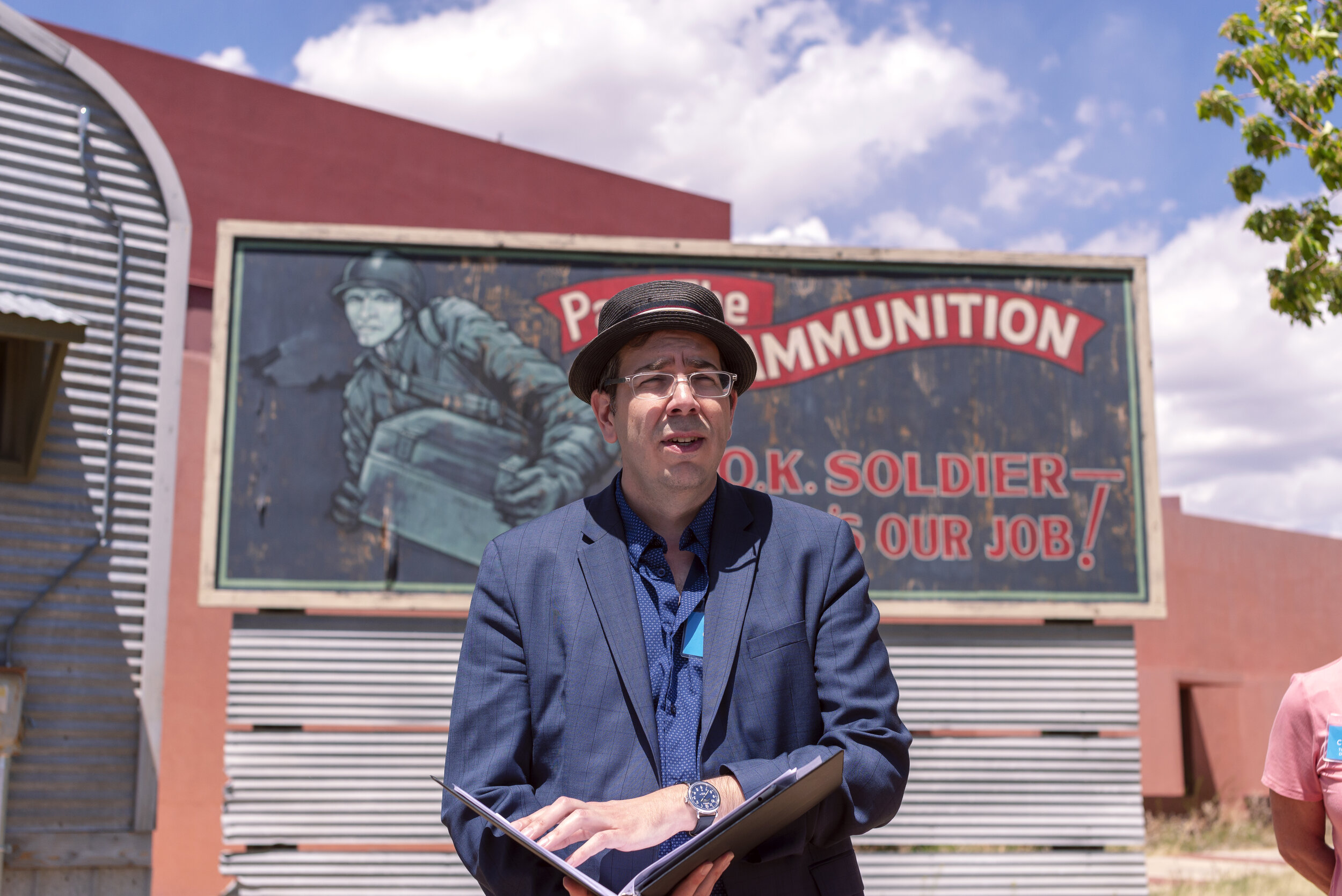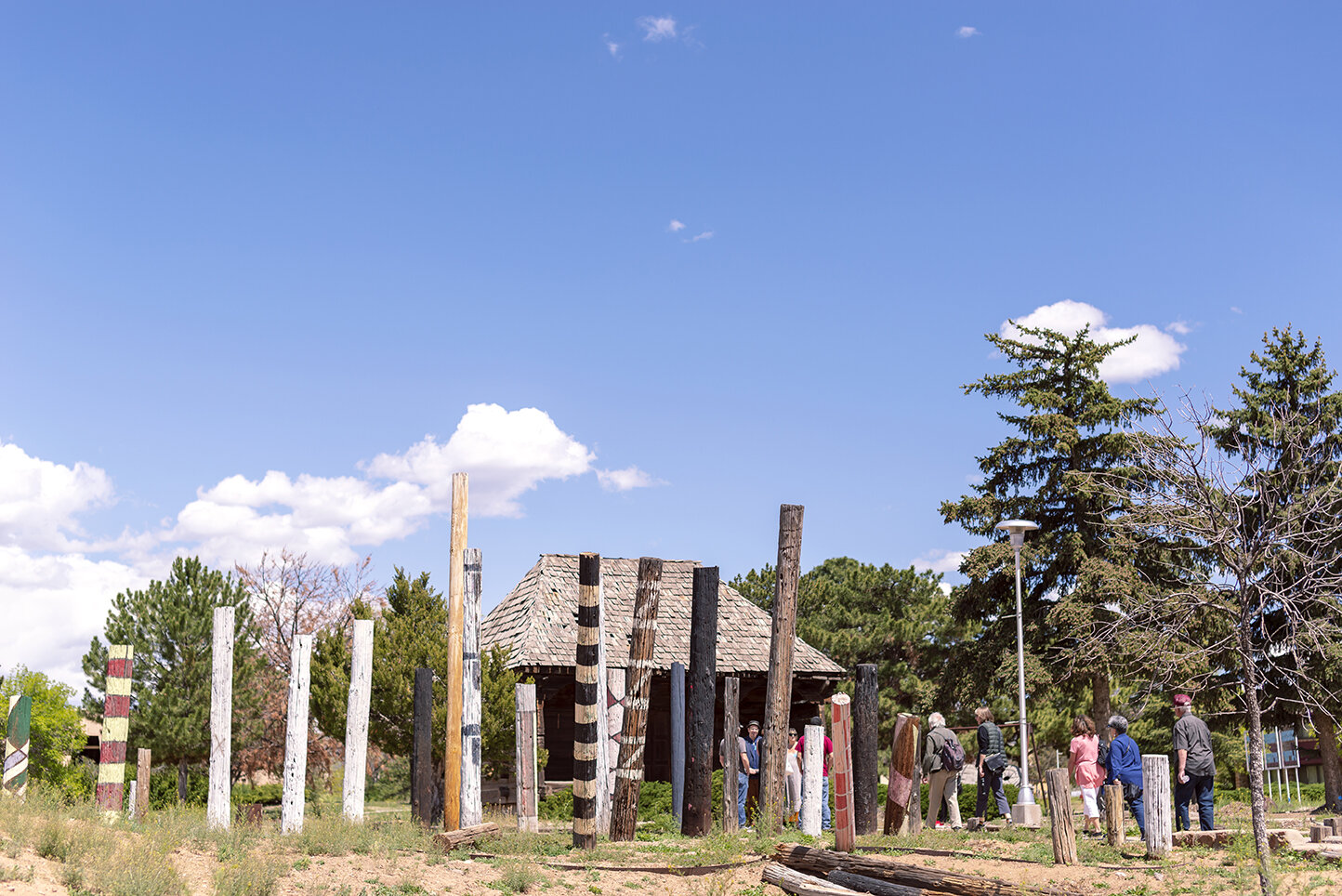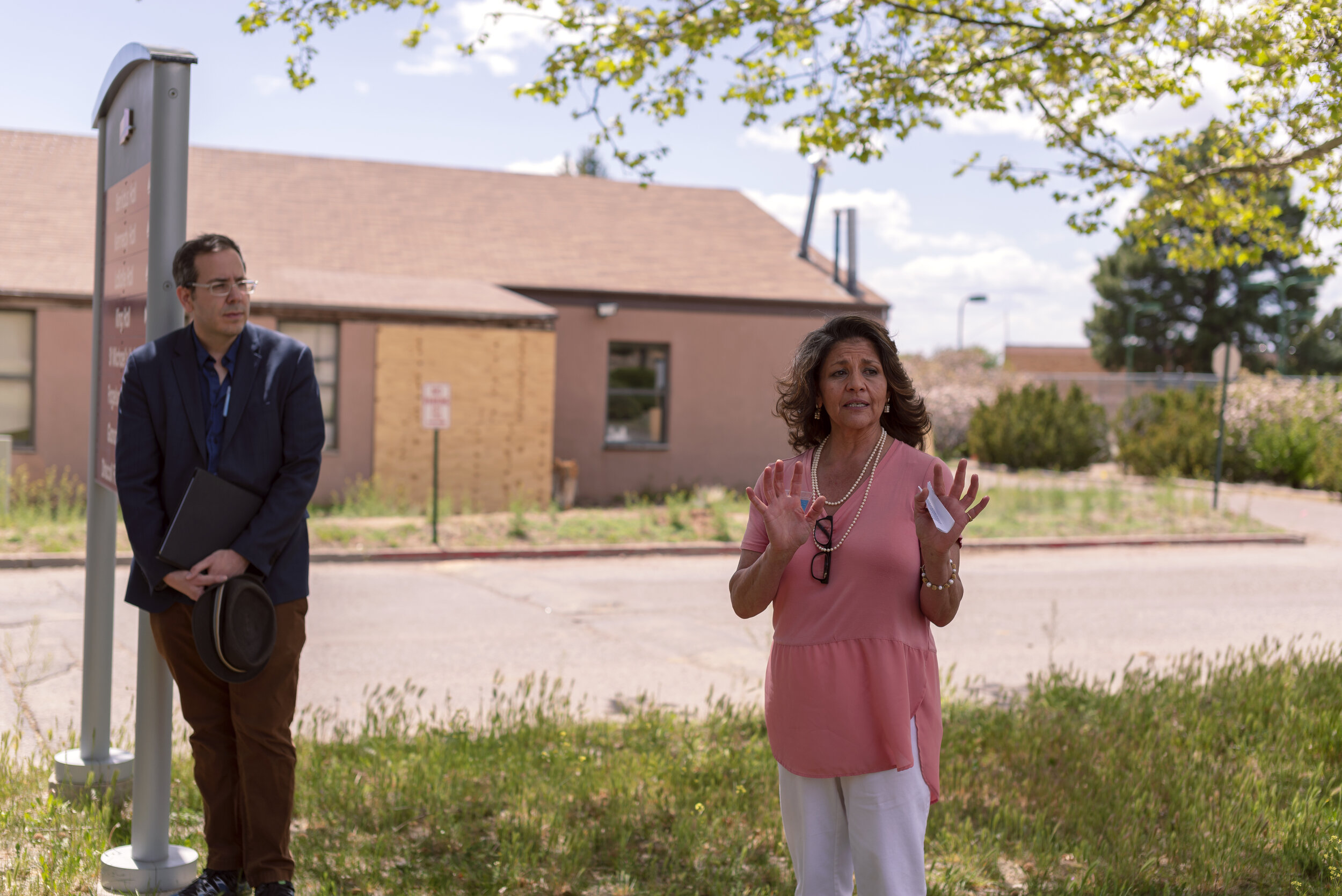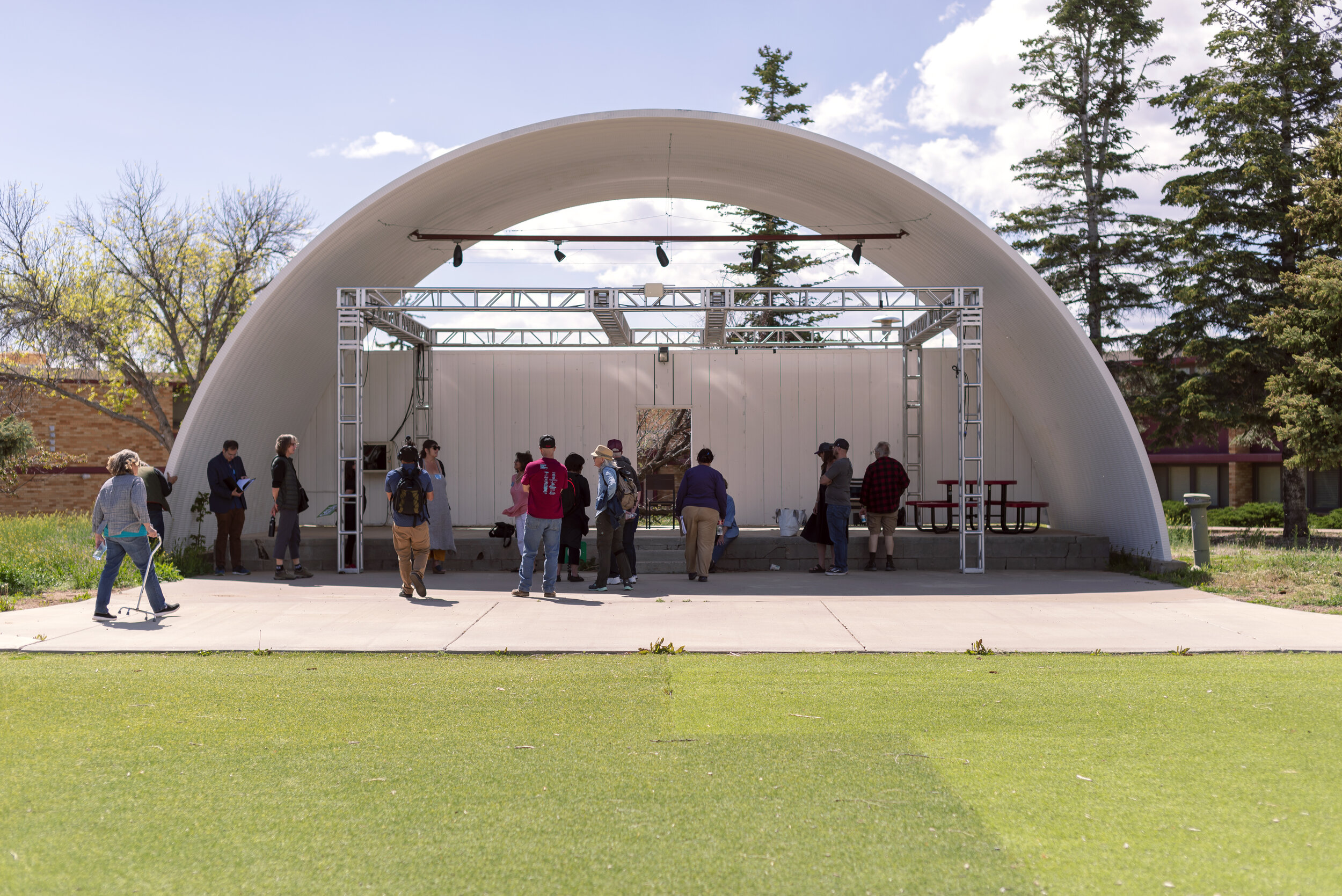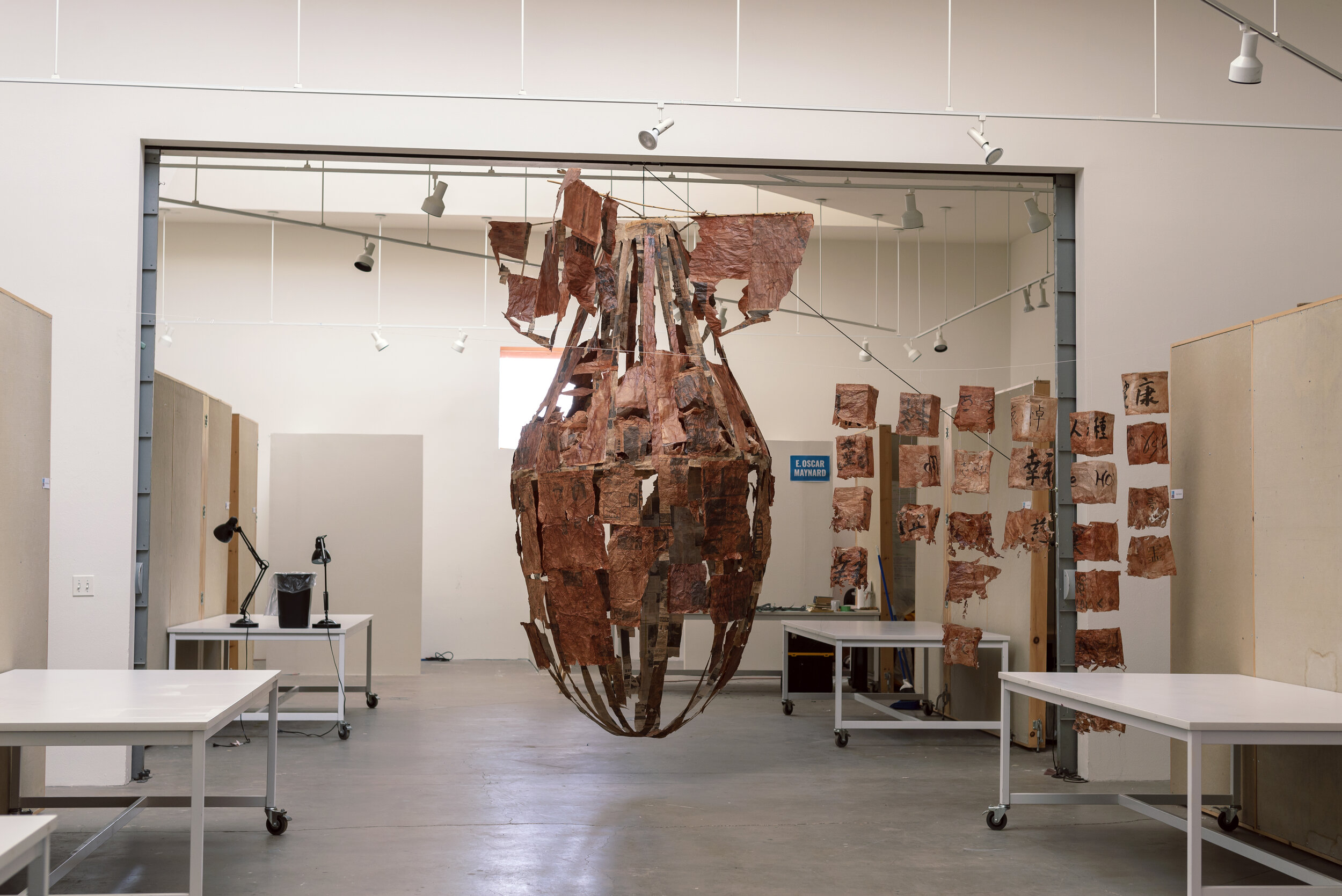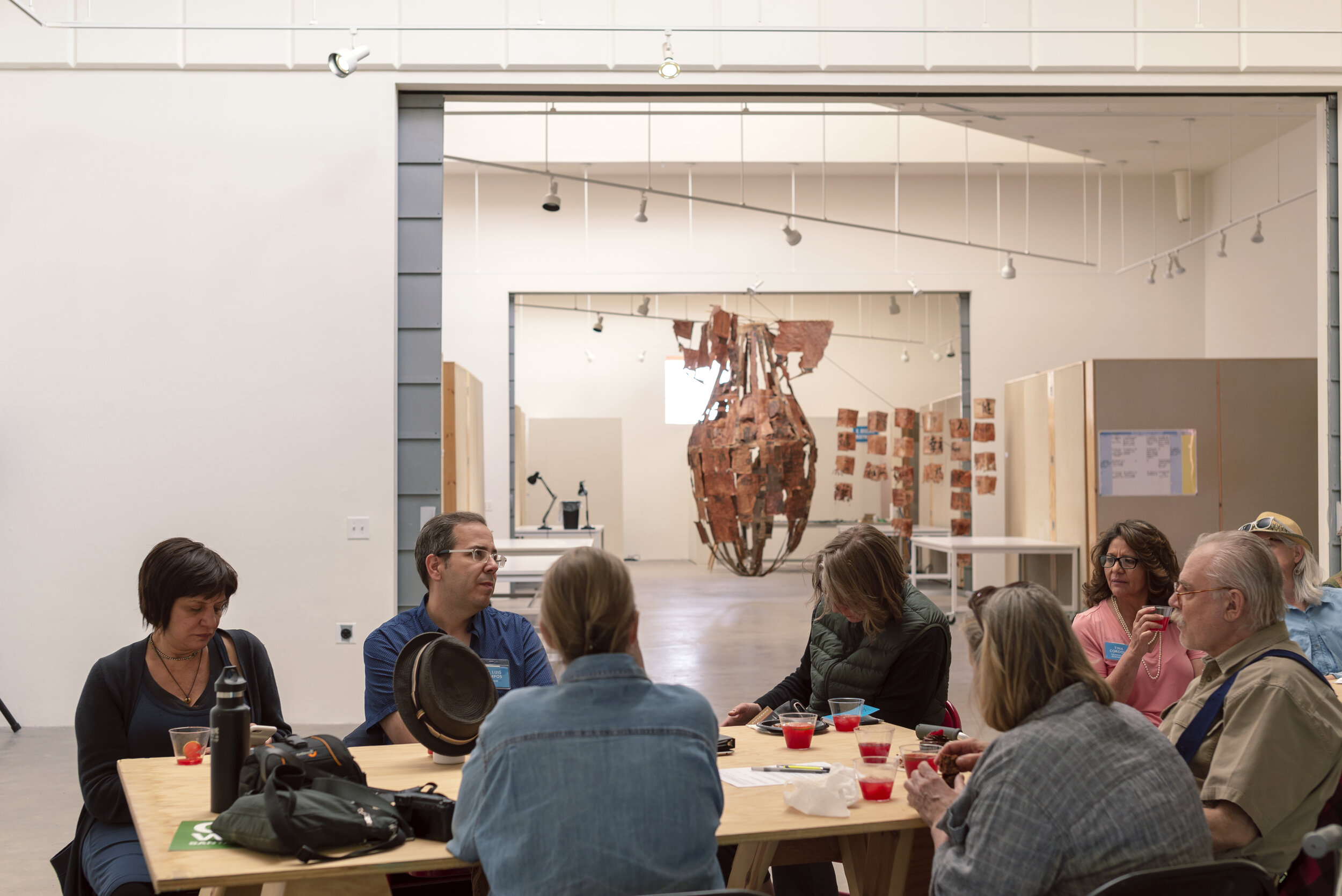ATOMIC STORIES: Media and the Nuclear History of New Mexico
Artist Andrea Polli organizes a walk with nuclear Historian Luis Campos and Activist Tina Cordova on the impact of the atomic bomb on the landscape and people of New Mexico. Luis Reflects on the Experience:
May 4th, 2019, Santa Fe Art Institute
Our Atomic Stories walk met on the grounds of the Santa Fe Art Institute, which is situated at a former military barracks turned film set. We began inside with a brief overview of atomic history leading up to the Manhattan Project, then headed outside to tour the site. Near abandoned structures from the set for Manhattan, I introduced the scale, scope, and speed of the development of the Manhattan Project. We paid particular attention to the lived realities of those who participated in this effort—their youthfulness, their commitment to secrecy but also their small acts of resistance against the militarization of daily life. We reflected on the collaboration of Americans and European scientists, the scientific brainpower assembled at Los Alamos, and the industrial scale of the project.
Our next stop focused on the first atomic test at Trinity, exploring its aims and reasoning, various shocking eyewitness accounts, and the tragic stories of the downwinders, (families who lived near the original test site). The claustrophobic sense from the overhanging building then enabled us to transition seamlessly to a story of Cold War civil defense. We walked over to a nearby well, which evoked atom-inflected stories of agriculture and subsistence near Trinity, and the effects of environmental contamination from uranium mining in western New Mexico, including the massive Church Rock spill of 1979. We proceeded to a sculptural installation, where we talked about the ongoing health effects for downwinder populations. An old cottage nearby evoked the exclusion zone around Chernobyl, raising questions of how to be at home when one can no longer be at home.
Our journey brought us back indoors to a theater to watch a video exploring the atomic bomb by my co-leader Andrea Polli. Our final discussion point centered on the rise of the antinuclear movement, and the ways in which art and culture have played central roles in atomic diplomacy and nuclear disarmament. As a historian of science and an instructor of a course on “Atomic America,” it was a privilege to be able to share the rich and complex histories and legacies of our nuclear world with members of the community. It was a unique opportunity to do so in the form of a walking tour, where particular sites could evoke a kind of “double-vision”—seeing both the architecture, space, or environment before you, but also seeing it through a second set of eyes, opening up an otherwise largely inaccessible history. The pairing of a historical overview with the work of a local activist advocating for the recognition and compensation of atomic downwinders made for a particularly poignant and powerful form of interaction, and Tina and I worked off of each other’s comments in productive fashion.
The inclusion of a final meal at the end of the event, with thematically relevant dishes—chocolate cake from a recipe that had been served to laboratory scientists at Los Alamos, mushroom caps evoking the mushroom cloud, a strawberry tart referencing the story of an elderly babushka in the Chernobyl exclusion zone offering strawberries from her garden—was the perfect capstone to a three-hour tour that was over before we even realized it. But there will doubtless be a long half-life to the stories, conversations, and connections that we made on this WALK.

